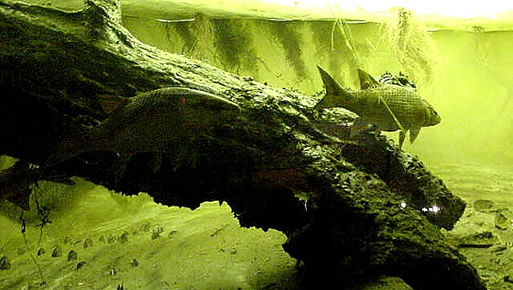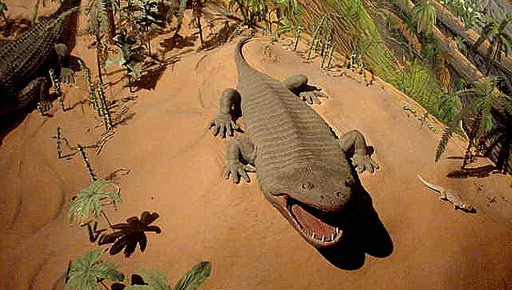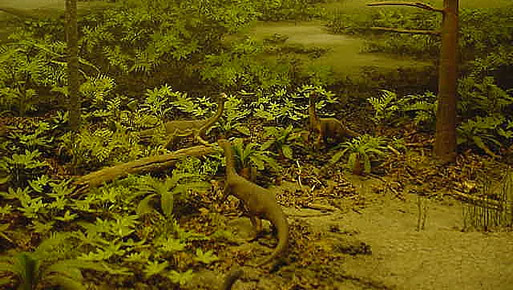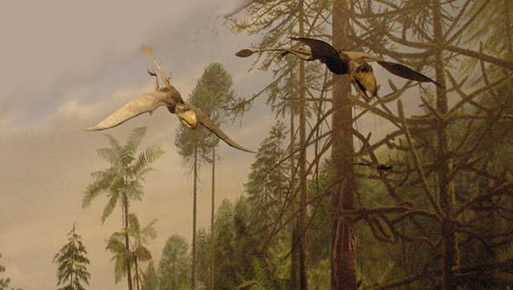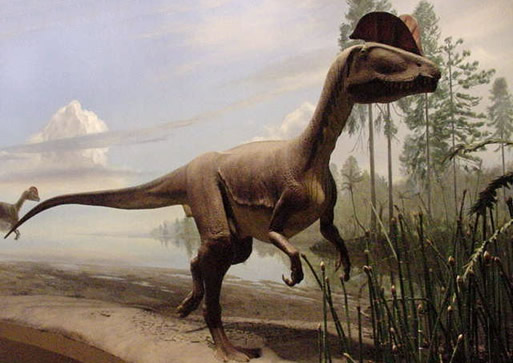Dinosaur State Park, Rocky Hill, Connecticut
A fifteen minute drive from Wesleyan's Science Museum along the river on Rt. 9 north will lead one to Dinosaur Park at Rocky Hill CT. There, through the influence and inspiration of Professor Joe Webb Peoples and others, is a museum dedicated to exploration and understanding of our distant past. We find a collection of both prehistoric animal artifacts and three dimensional reproductions in what is accepted to be their natural habitats.
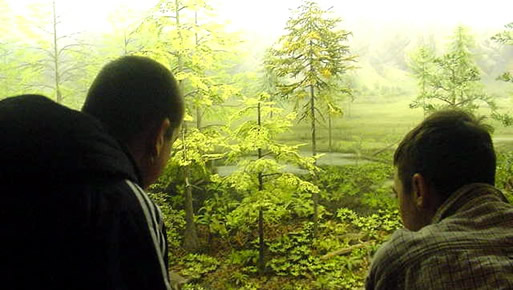
Two students viewing a diorama of prehistoric times
HISTORY OF DINOSAUR STATE PARK
The following history of Dinosaur State Park (Rocky Hill, CT) is excerpted from a field guide paper by Rodgers and Skinner (1985):
"In 1966, the State Highway Department chose this site for a central Highway Department Research Laboratory, close to but not on Interstate 1-91 near the geographic center of the state. One Friday afternoon in August, one of the bull-dozer operators, Mr. Ed McCarthy, engaged in clearing the overburden to bedrock before construction, turned up flat slabs of sandstone on which he recognized some large dinosaur footprints (such prints have of course been well known in the Connecticut Valley for 150 years).
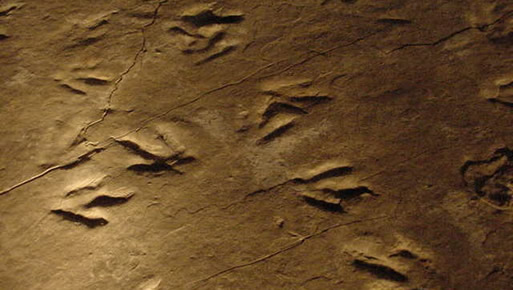
After investigating, the project engineer, Mr. Tom Jeffreys, stopped excavation in the area and called the Yale Peabody Museum, the University of Connecticut, and the newspapers; later an announcement was broadcast on TV, and the Saturday Hartford Courant carried the story. As word of the find spread, many persons came down over the weekend to pick up examples for their patios, rock-gardens, etc.
The news also reached Ms. Jane Cheney, Director of the Children's Museum in Hartford, who went directly to Governor John Dempsey (about to stand for re-election) and persuaded him that the find was exceptional and should be preserved.
At a meeting of state officials on Monday morning, it was agreed that Peabody Museum would direct the bull-dozer operators while they determined the size and significance of the deposit; Prof. John Ostrom of the Museum and Prof. Joe Webb Peoples of Wesleyan University, then Director of the Connecticut Geological and Natural History Survey, were in general charge. Later the Governor declared the locality "The Dinosaur State Park."
A news item concerning the dinosaur trackway appeared on the front page of the Hartford Courant for twelve straight days. Clearing continued for several weeks, until a single surface of sandstone displayed over two thousand tracks. Testing elsewhere on the property showed that the layer with the tracks was even more extensive; moreover it is only one of five layers within about 2 meters of rock that display tracks.
By this time, it was thought that enough had been uncovered to make a spectacular display, and the work was stopped; the main concern after that was to preserve the tracks against the approaching winter's freezes and thaws. The tracks were therefore covered up, and, except for one or two brief spells, the main discovery site has not been uncovered since.
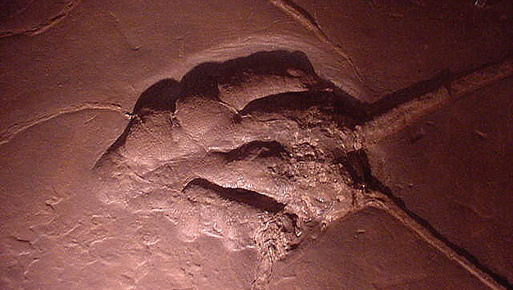
Cast of Deinonychus antirrhopus
On the other hand, in 1967 a more modest area was uncovered west of the main site (in the same layers), which could be covered by a temporary structure (a plastic bubble kept up by excess air pressure), and this area became the main exhibit at the Park.
Later the temporary structure was replaced by the present more permanent structure, but the original plan to build a larger museum over the main, original discovery has never been carried through. In any case, the Park was duly dedicated in 1967 by Governor Dempsey; honor was paid to Mr. McCarthy, the original finder of the tracks; and the Rocky Hill High School Band played a new piece of music called "Dinosaur," written for the occasion by its Director.
As the Hampden flow forms the ridge immediately south of the trackway area, the stratigraphic position is known exactly; when the 1-91 cuts about 2 1/2 miles to the southwest were opened, the trackway levels were pinpointed there. While the main trackway was still uncovered, a trench was dug down dip to the south, which showed that the trackway layers are cut downdip by a small thrust fault, dipping south more steeply than the beds, so that the trackways layers are brought back up closer to the land surface. . .
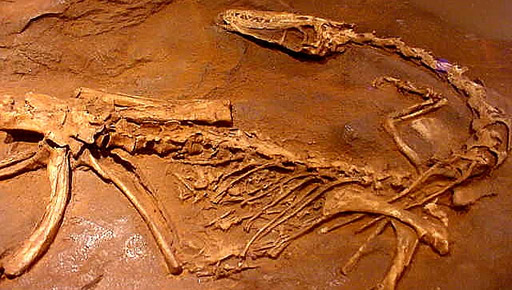
Dinosaur skeletal remains are rare in Connecticut, but they do occur; some are exhibited in Dinosaur State Park.
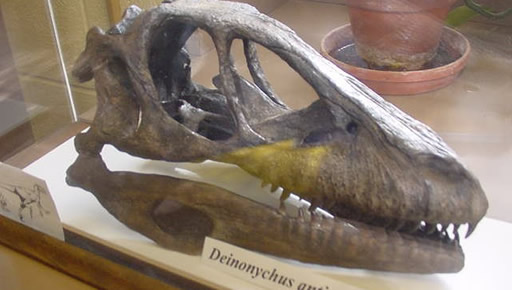
Cast of Deinonychus antirrhopus skull.
Dioramas with reconstructions of ancient Connecticut in Dinosaur State Park Museum:
